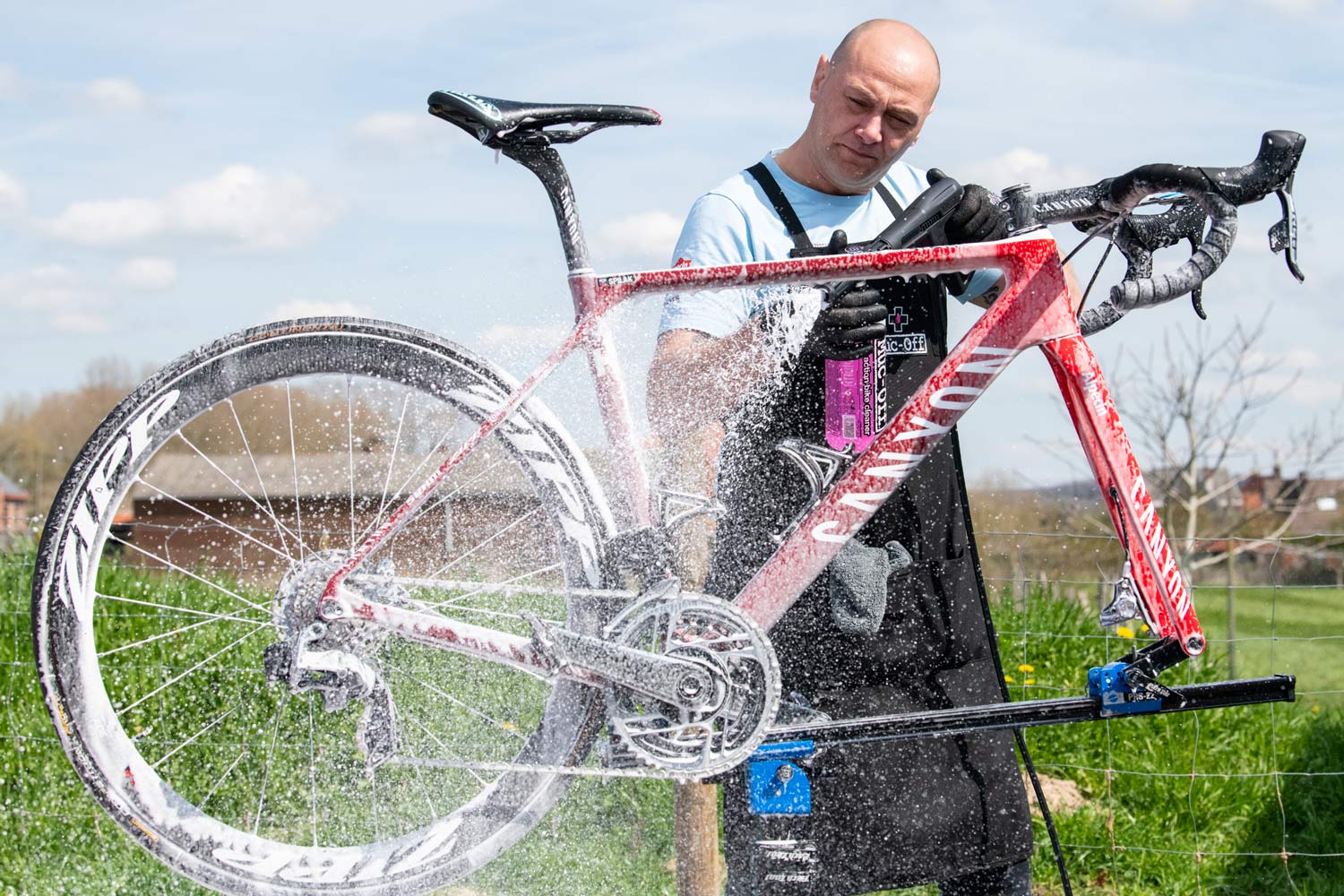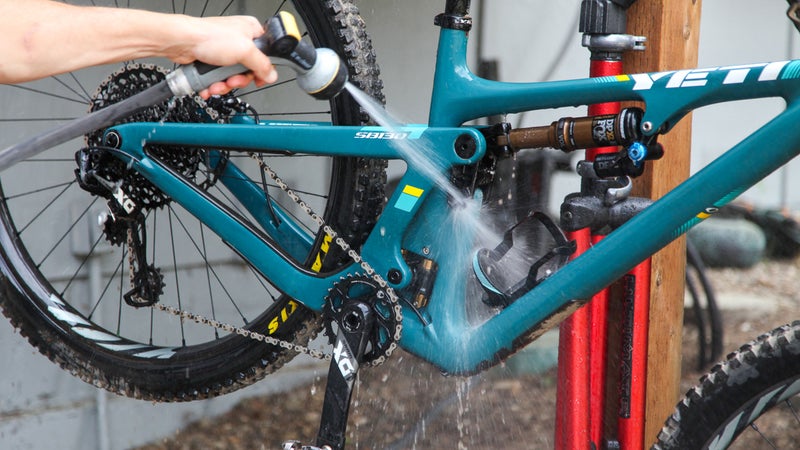
Bike riding activity has attracted many users with the onset of the Covid 19 pandemic. More people prefer riding a bike for their daily body activity. Even if most people are not daily cyclers, every ride is constantly exposed to dust, mud, and other physical things that can stick on the bike. When these things are left uncleansed, they can result in rusting of some of the metallic parts of the bike and lead to clogging in the bearings damaging other parts. Therefore, based on the nature of the riding experience, check your bike after the ride to consider whether it requires cleaning or waiting for the regular cleaning schedules. With or without riding on muddy roads, it is recommended to clean your bike once every month or after 25 rides. However, it will not do any harm to light-clean your bike after every ride. Though you can reserve the full cleaning to your end month schedules, you cannot keep a muddy bike in the store after a ride just because your monthly cleaning routine is not reached.
It is important to learn how to clean your bike as you may damage the bike while cleaning it. There are the dos and don’ts that you need to learn to clean the bike and store it while cleaning properly.
Dos In Cleaning Your Bike
1. Use a smooth washing rag like a used sponge in good condition. It is important to note that in keeping your bike, you must not need new cleaning rags and clothes. However, any used or recycled clothes and cotton rags can be used in cleaning bikes. You only need to use them while clean to avoid making the bike dirtier.
2. Reach the hard-to-reach areas using a clean cloth to ensure that the bike comes to perfect cleanliness. Ensure that you reach the joints and the bearing areas to unclog the dust trapped between the spokes and the flair.
3. Be committed to cleaning your bike and understand the benefits. A clean bike is easy to ride and improves the riding experience. Therefore, please keep it clean after use to enjoy the next ride effortlessly.
Don’ts In Cleaning Your Bike
1. Keep your cleaning tools altogether after use and during use. Mixing your tools ups will make them dirty. You may apply grease and other dirt from a dirty cleaning tool during use, which can lower your results.
2. Avoid the use of abrasive detergents in cleaning your bike. The metallic parts of the bike may react to the components of the detergents and which can corrode it.
3. Not scrub the bike frame using an abrasive material or detergents. The frames are susceptible to fading. Therefore, any abrasion may leave marks on your bike, reducing its aesthetics and value.
4. Do not use high-pressure horse pipes when cleaning the bike as the pressure may damage the bearings and lead to unnecessary bike repair costs. A medium pressured horse is enough for a bike as it is not a motorized machine.
What You Need To Clean A Bike
You need to gather what you need to clean your bike before the exercise. As mentioned in this article, it is not necessary to use very new products every time you clean your bike. If you become creative enough, you can get enough of what you may need at your home. Your unfitting cotton T-shirts, for example, and that piece of your old mattress that you no longer use can be used in cleaning your bike. The following materials are essential to have before cleaning your bike.
- Smooth Cleaning Cotton Rags.
- Bucket of water
- A medium horse water pipe with a trigger spray.
- Scrub brushes
- Sponges
- Bike cleaning detergent
The materials mentioned above are the basic requirements for cleaning a bike. However, you can add other materials for your convenience. For instance, with a bike stand, you can get an easy time cleaning the bike, but without it, you can still, with effort, achieve efficiency.
Step To Step Guide On Cleaning A Bike
1. Fill in your bucket with water and lay your brushes and rags. For the first step, you need to have the essential materials to start with. Water will help you with cleaning your bike from the start. Therefore, having your bucket ready with water will help. Layout your brushes both for the frame and the wheel and peddles.
2. Place your bike on a bike stand, if any, or if not, place it in a place where it will be easy to reach the parts without becoming muddy. You can consider cleaning your bike at the laundry hall or any other place that cannot get muddy from the bike wash fluid.
3. If you have a chain keeper, you can use this step after removing the wheels. The chain keeper helps your chain to remain stretched and avoid falling or folding up. However, if you do not have the chain keeper, remain careful when cleaning the chain area to prevent the chain from falling or folding up too much as the tension may cause weak points along the chain, which can cost you a repair or replacement.
4. Wipe your Frame with a sponge and water to start cleaning your bike. Your frame accumulates most dust and dirt when cycling. Therefore, in the order of priority, it is recommended to wipe it with a sponge and water.
Avoid spraying the frame with a high-pressure spray head, as mentioned, to keep the bearings in place. Spray the frame with a bike cleaning agent and leave it for five to ten minutes before using water and the brushes to give your frame a perfect cleaning.
5. Use the degreaser to the chain and leave it for some time before rising it with a medium spray of water. Use a little of the dish soap if the chain remains greasy even after applying the degreaser. You may use a rough cloth to rub the dish soap around the chain and rinse with water to bring it a perfect clean.
You should use a toothbrush or a smooth brush to remove dirt within the rings and teeth of the chain. You can use dish soap around these sections if the dirt persists in having your bike chain unclogged and easy to handle during your cycling experience.
6. You need to use bigger and softer brushes to achieve cleanliness without much effort for the wheels. Occasionally dip your brushes in your bucket of water wheel cleaning around the rim and the wheels from the valve area.
The wheels can accumulate much dirty and clogged earth particles at the surface’s treads. Therefore, ensure that you unclog the dirt and mud from this section to give the bike perfect cleanliness.
Using a big brush ensures that the rim is also cleaned as a wheel. Big brushes can access the wheels and the rims altogether, saving on the time that could have been sued to handle the wheel and the rims independently.
7. Clean the breaks carefully to avoid damaging the braking surfaces. Do not use an abrasive material to clean those surfaces. With a sponge and clean water, you clean the brakes, braking pads, and brake cable without damaging them.
8. Use a degreaser to clean the chain cassette and set. The chain uses grease and thus accumulates dirty mixed with the grease, which requires an effort to remove. Therefore, besides using the degreaser on the chain, you should also use the agent on the chain and the associated parts. As mentioned here, you can also use the dish soap if the degrease fails to remove the grease and dirt altogether. You should avoid using homemade detergents that may contain corrosive chemicals that can react with the metallic chains and associated sets degrading the bike.
After cleaning your bike in the first round, you should recheck on the joint ad other susceptible areas which may have skipped a touch during the cleaning to ensure that you are keeping a clean bike. As this is an exercise that you can perform once every month, then you should take enough of the tie to do it. However, you can perfectly clean a bike within 15 to 20 minutes with all the necessary materials needed with care and effort.
Resist the temptation of skipping the cleaning routines of the bike as these may cause rusting and wading off of the bike parts and even damage the bearings. As mentioned, a clean bike is more accessible to cycle and improves the riding experience. Keeping your bike clean also reduces the costs associated with repairs and maintenances arising from unkept bikes and dirt. Consider using reusable materials like clothes and sponges to save on the environmental pollution and the resource pressure caused by the high demand for new bike cleaning materials. That way, you can have contributed to the conservation of your environment while keeping your bike clean.

